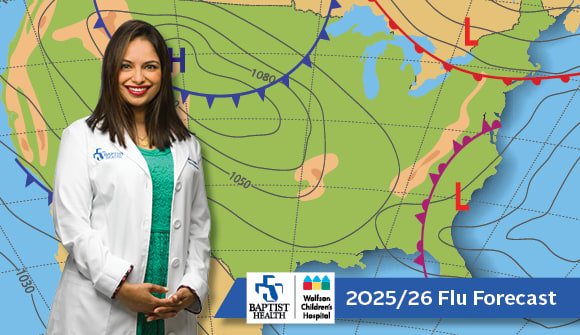It’s picking season
Tips for harvesting the best health insurance option for you.
Article Author: Wesley Roberts
Article Date:

After a hot summer, it’s a relief when cooler, crisp air arrives on the First Coast. Pumpkin patches pop up and spooky decorations adorn neighborhood homes. While not nearly as thrilling as picking your Halloween costume, it’s time for an important decision: What health insurance plan will work best for you and your family next year?
Open enrollment, a designated time when you can select health insurance coverage for the coming year, can be overwhelming. Plans can seem complex, explanations can be packed with unfamiliar language and deadlines can add pressure. First, there are some key definitions from HealthCare.Gov to know to take some of the “spookiness” out of the selection process:
- Premium: The amount you pay for health insurance each month.
- Deductible: The amount you pay for covered health care services before your insurance plan starts to pay.
- Out-of-pocket maximum: The maximum amount you will pay for covered services in a year.
- Copayment or copay: A fixed amount you pay when you receive a covered health insurance service.
- Coinsurance: The percentage of costs you pay after you’ve met your deductible.
Each family has unique health care needs, so let’s walk through six easy “tricks” to “treat” yourself to a less stressful open enrollment season:
1. Employer-based or individual?
Employer-based insurance is something your job helps pay for, while “exchange” plans are individual health insurance plans you buy on your own through a government website called the Health Insurance Marketplace.
- If you have employer-based insurance, your company typically chooses plan options and offers resources to walk you through the selection process with your family’s health care needs in mind.
- Exchange plans are designed for people who don’t get insurance through work, like those who are self-employed or unemployed. The government also offers Medicaid and Medicare insurance and offers a quick tool to help you determine which types of insurance you qualify for based on household income and other factors.
2. Mark your calendar
Open enrollment for health insurance plans happens once a year, so save the date to select your health insurance plan for coverage that begins January 1.
- Employer-based insurance open enrollment dates are determined by the company you work for – be sure and ask. This is typically in the fall.
- For "exchange” or “marketplace” plans, open enrollment starts on November 1 and ends December 15.
After open enrollment, your selection is locked in for a year unless you have a “qualifying life event" such as loss of health coverage, changes in household (marriage/divorce, childbirth, death) or a change in residence. Such an event would allow you to request a “special enrollment period” to select a new plan right away. A list of qualifying life events is available on HealthCare.gov.
3. Start with your needs in mind
Before you shop for coverage, think about what you and your family will need:
- How many preventive visits do you (and/or your dependents) expect?
- How often do you (and/or your dependents) see a specialist provider?
- What ongoing medical conditions do you (and/or your dependents) have?
- What can you expect this year (pregnancy, for example)?
- What prescriptions do you (and/or your dependents) need covered?
4. Understand the risks and rewards of different plan types
Different plan types fit different needs. While a high deductible plan with a low monthly premium may look more affordable, unexpected needs for care can leave you with financial responsibilities that can be hard to manage. What will you do if that happens?

5. Know who is "in network"
We know your relationship with your provider may be one of the most important and personal relationships that you have. Check with your insurance company and preferred health care provider for a list of in-network options and accepted insurance plans before making your choice.
6. Don’t face the unknown alone
Use the resources your employer makes available or consider an insurance broker to help you navigate open enrollment with ease. Sometimes they charge a modest fee but can help you save money on your plan in the long run.
To ensure you can see your preferred Baptist Health and Wolfson Children’s provider in the coming year, visit our “Insurance Plans Accepted” page. Need to see someone right away? Baptist Health has 24/7 online doctor’s visits available that only cost $69 per visit – with or without insurance.



